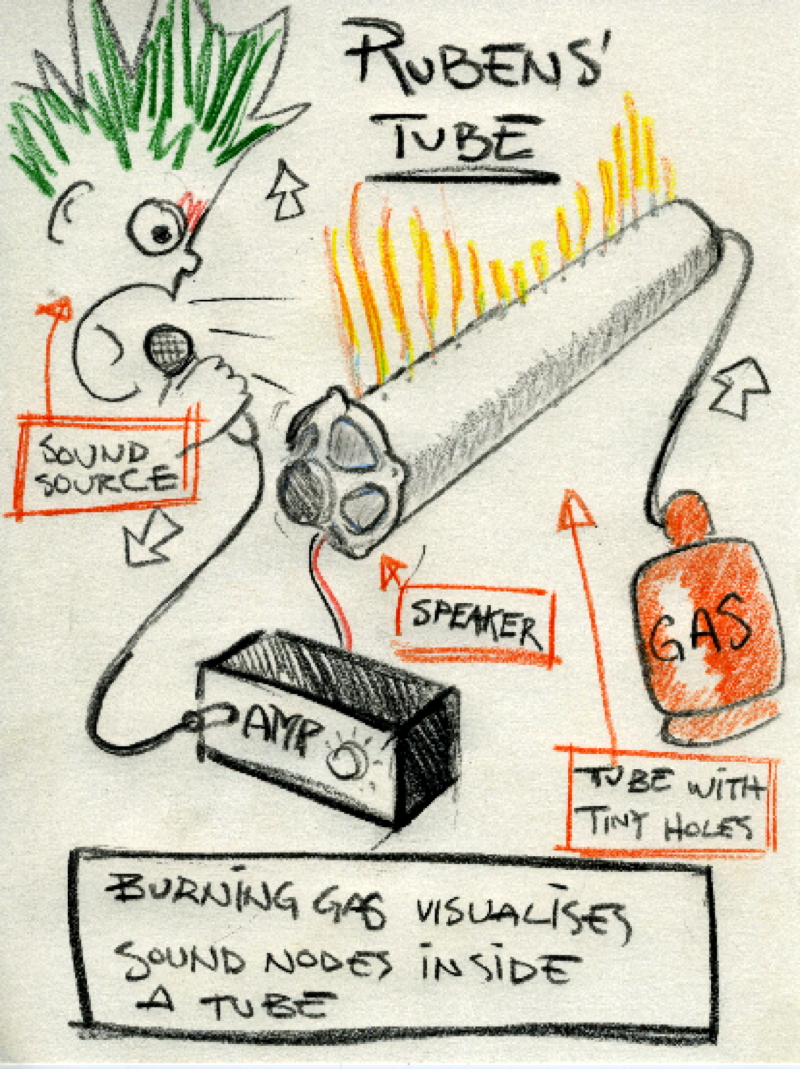
- This event has passed.
Lab for physical music @ Verkstedhallen
19/05/2014 - 23/05/2014
FREE ENTRANCE
Audun Eriksen / Harald Fetveit / Eirik Havnes
Lab for physical music #3
Resonance chamber and sound visualisation park for the deaf
Workshops and concerts @ Verkstedhallen
Opening Monday May 19, 20:00
Opening hours: Tuesday May 20 – Friday May 23, 14:00 – 20:00 / Free entrance
Workshops and concerts @ Verkstedhallen
Opening hours: Tuesday May 20 – Friday May 23, 14:00 – 20:00 / Free entrance
Even hearing people have an abstract relation to sound and how acoustics works. Sound is invisible, and the sense normally used to perceive it is the hearing. But how to make sound experiences also for people who do not use this sense? In the resonance chamber and the visualisation park both deaf and hearing people can see how sound waves behave, and feel its impact on the body.
An empty box-shaped space can be used as a resonance chamber. Resonance occurs when a sound’s wave-length matches the space’s physical dimensions, like the distance between two opposing walls or ceiling and the floor. Then the sound becomes extremely reinforced in some specific areas of the space, whereas barely audible elsewhere. The places where it is reinforced are called nodes.*
Technically speaking, a space can behave in a similar way to a wind instrument. In a flute, a sound wave moves up and down the length of the pipe, and the time it takes to make this movement decides the frequency of the tone. But since a room is very much larger than a flute, only very deep tones can make the room resonate — tones with a frequency of 15 to 80 Hertz. These are frequencies deaf people can perceive. The deepest of them maybe even better than hearing people.
Not only large spaces resonate at low frequencies. That the body does too. Different frequencies can make different organs start to vibrate. Luckily NASA has documented these different frequencies quite well, so it should be possible to make compositions that plays different body organs.
By drawing them on the floor, the nodes are easily found, and one may make one’s own composition by walking from node to node.
To understand this even better, we put some items into the space that makes visible the movement of sound in different materials. Here one can test for oneself with different sound sources. Would you like to see your favourite tune in burning gas? Bring plug it in!
Lab for physical music #3 is realised by Dans for voksne and Eirik Havnes. Lab for physical music is a series of projects for deaf people to investigate physical aspects of sound. Lab #1 was among other places shown at Rockheim and dealt with low frequency sounds at extreme levels (137dB). Lab #2 was a weeks programme with deaf sound artist Christine Sun Kim. Next step is to make workshops where deaf people can investigate sound more systematically. If you are interrested, mail to: fysiskmusikk@gmail.com
*Node is latin for knot, but a knot is normally associated with a point. In our case it makes more sense to think of lines in the space.
Supported by PNEK, TEKS, Norsk Kulturråd, Trondheim Kommune, Eirik Havnes and Harald Fetveit. Rubens´ Tube by Audun Eriksen
Thanks to Olav Skjelmo, Verkstedhallen and Peter Svensson, NTNU



